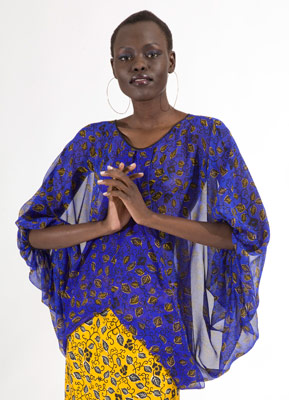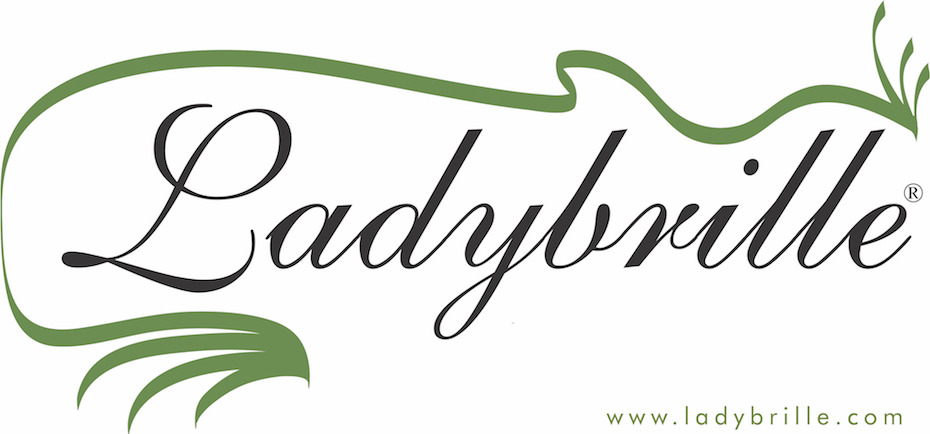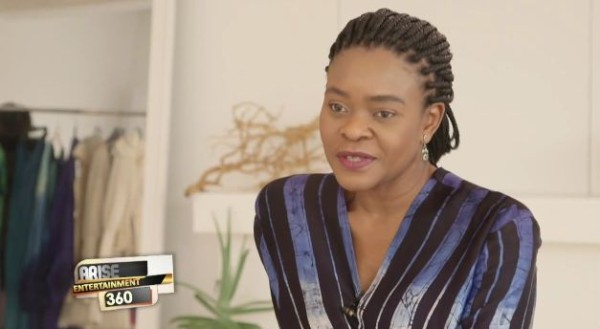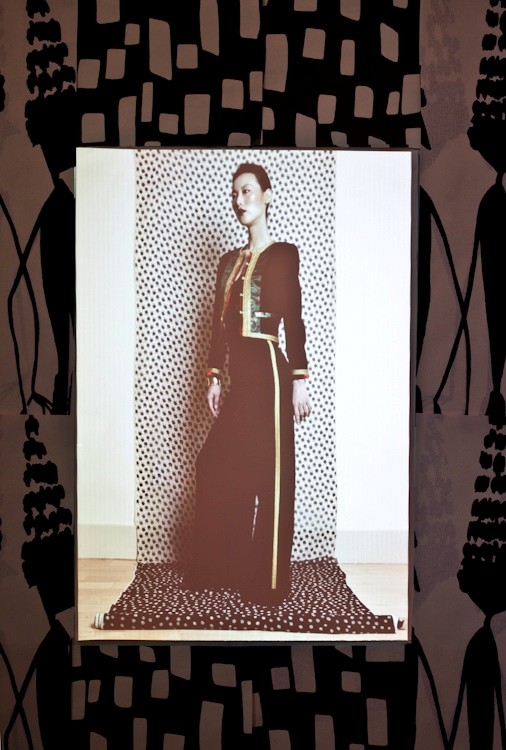 Lola Faturoti is a familiar name in the USA and European fashion industries but not among Africans or Africa’s Fashion Industry. In 2000, Lola created a buzz when she upstaged Ralph Lauren’s fashion show, at New York Fashion Week, with a show of her own right across the street from his show. Her move got her noticed and profiled in numerous top fashion publications including American Vogue, WWD and the New York Times.
Lola Faturoti is a familiar name in the USA and European fashion industries but not among Africans or Africa’s Fashion Industry. In 2000, Lola created a buzz when she upstaged Ralph Lauren’s fashion show, at New York Fashion Week, with a show of her own right across the street from his show. Her move got her noticed and profiled in numerous top fashion publications including American Vogue, WWD and the New York Times.
Lola’s buzz and quality work also helped get one of her designs to be a permanent fixture at New York’s Metropolitan Museum’s Costume Institute. Nevertheless, despite all of her popularity, Lola experienced difficulties typical of an emerging designer such as no financial backing and an inability to fulfil orders. She took a break from running her fashion business, moved to Italy, and designed, for three years, for other reputable designers. In 2005, Lola returned to the States armed with business skills and improved creativity. Last year, Lola debuted her new collection. This year, she prepares to show her collection during the upcoming New York Fashion Week. In this interview, Lola talks to LADYBRILLE.com about some of her experiences in the industry and more importantly, she offers her views on what it takes for African designers to gain recognition in the very competitive USA/European fashion industries…
LADYBRILLEmag.com: Lola, I am really interested in you letting our readers [k]now who you are?
Faturoti: I basically started designing in 1993. I studied fashion design in London. I was born in London. I moved to Nigeria, to Ondo town [in] Ondo state [Southern part of Nigeria] and I [returned] to London when I was 17. I moved to New York [NY] in the early ’90s after studying in London and [in NY], I started working at this store called Charivari, one of the biggest stores. Actually then, it was bigger than Barneys and it was from there that I started basically designing just for myself. [C]ustomers where coming and asking what I was wearing. [C]ustomers like Diana Ross. Just mention it, [and] every celebrity came into that place so that was my big exposure.
LADYBRILLEmag.com: Hold on a second. How did you [get] that job?
Faturoti: I don’t know how I met Marco. Marco was [the] manager at Charivari. We became really good friends. Prior to that, I was working for Joseph in London. I was working there before moving here [USA] and so I had a very good experience. Working for Joseph in London is a huge thing. I moved here and Marco got me the job and I started working [at Charivari].
Actually, I was very fashionable, very stylish very trendy. [I] would design and wear my things and the customers would ask were they could buy what I was wearing. Anyway, one day the [vice]- president [Barbara Weiser] of the store asked if I would like to start designing my own line and [display] my first collection and see how it goes. I did that and it was May of 1993.[O]vernight it [became] a different story from there. Every magazine . . . New York times, my first article was New York Times and then all the other magazines came after. Then I did my first show October of that year and that was how I started.
LADYBRILLEmag.com: [T]hat is such an amazing story. Now, I understand there is an even more unique story about how you did not necessarily show at the tents in Bryant Park [where NY Fashion Week is usually held] but had a little set up that stole the attention from Ralph Lauren’s show in 2000. Could you tell us more about that?
Faturoti: Yeah. In the past I had lots of fashion shows. Since 1993, I was basically showing till 1996. In 1997, I got tired of fashion. I got tired because if you don’t have an investor in fashion, it is impossible to keep going because you put your money in there and basically money goes very fast in fashion. I got tired of basically working and not really making any money and always looking for money. So, I stopped. I went into [doing bridal] work. Since 1999, was the end of the millennium, I got inspired to do something and from there I designed very strong couture, 9-11 looks, and I exhibited it at the Milk studio in New York. That is one of the city’s very popular studios and basically, all the important people came.
[F]rom there, New York Times did a big story in which they chose 18 of the best designers from the whole world and they asked me if I would like to be a part of it. I was thinking these are young designers but, no. They were nine designers from America and nine from the rest of the world. The nine designers from America were Ralph Lauren, Calvin Klein, Donna Karan, basically all the big designers, eight of them and then me!
LADYBRILLEmag.com:[laughs in excitement]
Faturoti: [Faturoti in an excited voice continues] In Europe, the designers chosen where Comme Des Garcon, Gaultier, Alexander McQueen–nine of the best designers. So this for me was like HUGE.
LADYBRILLEmag.com: Absolutely.
Faturoti: After all of these and a four page in New York Times where I was opposite Ralph Lauren, [my design] exhibited in Barney’s for two weeks and now it is at the Costume Institutes for one of the best fashions during the millennium.
LADYBRILLEmag.com: Whoa.
Faturoti: The season after, I [received] sponsorship from Swarovski Crystal for my show. Peter Arnell [advertising guru] and Vogue’s Andre Leon Tally were [instrumental] in helping me produce my show at Nobu [Tribeca restaurant in NY]. I got a good write up from Cathy Horn of New York Times. Then, I took a short break and in January/February of 2000 I decided I wanted to show again. I did not have any clothes, I did not have any money. I called my friend in Austria and he lent me some money and I basically did a very strong look of another strong look and this was inspired by Leonardo Da Vinci.
The story was of an African woman who fell in love with a painting by Leonardo Da Vinci and he created the look. The exhibition started with Alek Wek unveiling the pieces which are basically the models and this was the show that I did on the streets in front of Ralph Lauren that everyone was writing about. After the show, I moved to Italy. I lived in Italy for three years working for other designers and I did [some] shows in Italy and made lots of contacts. I moved back [to the States] in 2005 and started designing again last year.
LADYBRILLEmag.com: Do you have an opinion about Africa’s fashion Industry?
Faturoti: I think there are some great designers out there. My father sent me some Nigerian magazines and I am very inspired by what they do.
LADYBRILLEmag.com: Let’s focus on Nigeria for a minute. Who are your favorite Nigerian designers?
Faturoti: I don’t really know their names but from what the people are wearing in the magazines, I am inspired by some of them. I also can see the way they are putting the Western fashion and incorporating it into their way of designing and I think it is very interesting but I think they are just concentrating on Nigeria. If they are, that is very good. If they are concentrating on the Western world and expanding, they have to look for a way of doing that.
LADYBRILLEmag.com:Well, then let me ask you this. What are your suggestions for Nigerian and [ other African designers] who really want to make it into the [USA] market. They want to create Western silhouettes [b]ut retain their own identity through their fabrics?
Faturoti: Some of them are doing it already by incorporating the Western fabric with the African fabric. I think it is also the silhouette. The shape. What I really like is the trims. The way they trim the costumes/clothing over there [Nigeria], especially the Ankaras. I really find it inspiring the way they cut into the Ankaras and put the trims. I like that a lot. But, I think one thing they need to brush up on are Western shapes.
LADYBRILLEmag.com:So they would keep/retain the uniqueness of their African fabrics but do more Western shapes?
Faturoti: Exactly.
LADYBRILLEmag.com: Any other suggestions? How do you get into retail stores, for example?
Faturoti: The thing is that [p]ublicity is very important. They need to put their name out there, especially coming from [Africa]. People need to see what they are doing and it is from there that they could start getting out there. It also depends on who they are trying to target. If they are trying to target the world, for example, then they need to move out of the African/Nigerian thing and move more into the world, basically involving outsiders to help them. If they stay only within the Nigerian or African PR/Sales or whatever, they wil always get to be in that market. But, if they for example say, “Okay, I am going to America to find a showroom that will take us on, you know then they have a chance of getting to the outside world.”
LADYBRILLEmag.com: I find even emerging fashion designers in the States have a very hard time being taken seriously by showrooms. What is the probability that a showroom will take an African designer seriously?
Faturoti: Well, America is kind of like different, especially New York. If you go to a showroom and they see talent, they will take you on.
LADYBRILLEmag.com:Even if the fabrics are very foreign to the showrooms and their target market?
Faturoti: Well, if they see something different but wearable, they will take them on.
LADYBRILLEmag.com: Now you have talked about [knowing] who their target audience is. There are lots of African women in the West, USA and Europe. A lot of them, from available data, like to shop, look great and have no problems embracing their own culture/clothing but want the modern silhouette you talk about. Do you think African designers targeting these women in the West would succeed?
Faturoti: I don’t see why not. I think what [African designers in Africa] are doing, Africans in the Western world would really like to have some of those things. For example, my sister lives in [W]ashington DC. She is very fashionable, she is a very smart woman and she wears a lot of Nigerian clothing. She has to send people to Nigeria or ask my mom to send her some of these beautiful things. But, if a designer comes here that they know of, I am sure she would rather prefer to buy it over here than having my mom send things to her.
LADYBRILLEmag.com: Going back to African fabrics, do you have any Ankara collections?
Faturoti: Yes. My current upcoming Fall designs has Ankara designs on silk fabrics. I also have other African inspired deisgns. One of the shoots WWD did for a write up on me also has an Ankara top I created but in a Western way. [I] want to be an ambassador for fashion from Nigeria in the Western World. I have to create not only for my people. I have to think of everyone in the whole world and how they can see my work and say, “[I] could wear this.” My biggest clients for the prints last season were in Japan and Los Angeles. They went for it even though the tops were boubou shaped but in a Western way so they went for it because they can relate.
LADYBRILLEmag.com: Where do you see your career going in the next five years?
Faturoti: I want the whole world to wear my collection. My dream right now is to be financially successful.
LADYBRILLEmag.com: Have you ever showed in Nigeria or anywhere in Africa?
Faturoti: No.
LADYBRILLEmag.com: Do you plan on showing [in Africa]anytime soon?
Faturoti: Yes, I will show in the next five years.
LADYBRILLEmag.com: [laughs] [G]ood.
Faturoti: [laughs] Yes. I am open but I just have not had the time but even if it just for my family.
LADYBRILLEmag.com: That will make them feel really proud, real good to see their daughter’s success.
Faturoti: Yeah. I would like to show kids in Nigeria and around the world that if you have a dream and you put a bit of energy. Actually, not a bit of energy.
LADYBRILLEmag.com: [Laughs] you definitely need more than a bit of energy.
Faturorti: [chuckles and then continues] There will be a lot of times that you will be like, “[That’s] it. I am not doing it anymore!” But, if you really believe in yourself and you keep going, you will make it one day. That is what I really want all kids to know. They can be anything they want to be.
LADYBRILLEmag.com: True. To whom much is given, much is expected. When we receive, it is incumbent upon us to give back.
Faturoti: Yes. That is important because the universe has given a lot to me in my life and that is something I would like to do, [to give back].
~by Uduak Oduok
~Republished July 2nd, 2009
Founded in 2007, Ladybrille® Magazine is a California based pioneer digital publication demystifying the image of Africans in the west through contemporary African fashion and celebrating the brilliant woman in business and leadership, with an emphasis on the African woman in the diaspora. Our coverage includes stories on capital, access to markets, expertise, hiring and retention, sales, marketing, and promotions.



